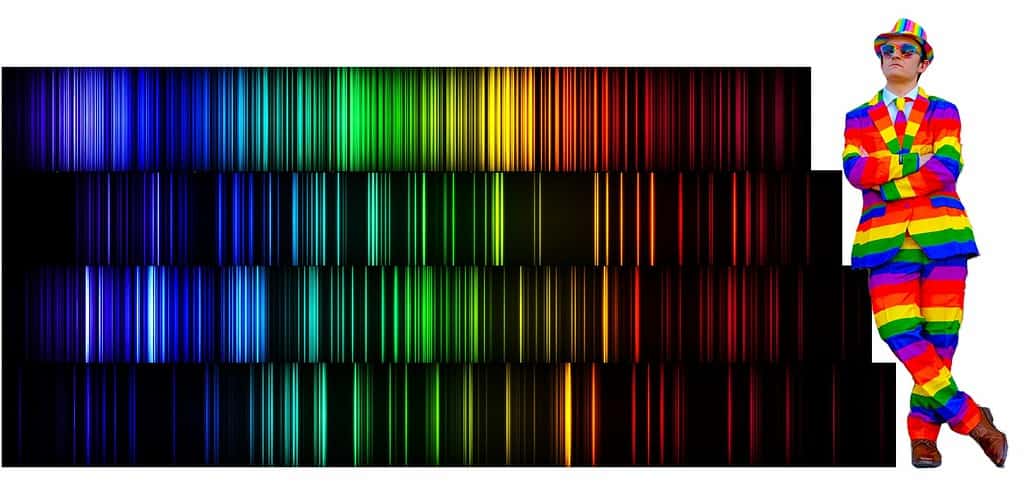
The periodic table of elements has long been a staple of science classrooms and laboratories worldwide, but have you ever wondered what these elements sound like? You can touch, see, and of course taste and smell elements, but how is hearing them even possible? Enter W. Walker Smith, a researcher at Indiana University, who has taken his passion for music and chemistry to a whole new level.
Through a technique called data sonification, Smith has converted the visible light emitted by the elements into unique, complex sounds for each one. In the process, he has effectively compiled a musical periodic table.
The resulting audio output is a fascinating mix of harmonies and beating patterns as the notes from different elements interact with each other. The simpler elements, such as hydrogen and helium, sound vaguely like musical chords, while others have a more complex harmony. For instance, calcium sounds like bells chiming together, and zinc resembles an angelic choir singing a major chord with vibrato.
The sound of chemistry
Smith got the idea during his initial forays into chemical sonification when he transformed the natural vibrations of molecules into musical chords.
“Then I saw visual representations of the discrete wavelengths of light released by the elements, such as scandium,” says Smith. “They were gorgeous and complex, and I thought, ‘Wow, I really want to turn these into music, too.'”
However, Smith is not the first to have this idea. Previously, other people have thought of assigning the brightest wavelengths of light reflected by a chemical element to single notes played by the keys of a piano. But in doing so, this approach ignores the rich variety of wavelengths that some elements, most notably metals, give off.
In order to preserve as much complexity and nuance as possible, Smith worked with experts in both chemistry and music to design a new computer algorithm that converts each element’s light data into a mixture of notes, all in real-time. This computer program converts discrete color wavelengths into individual sine waves whose frequency corresponds to that of the light.
This is not a perfect conversion though since an ‘octave’ of light has a much higher frequency than the audible range, so the researchers scaled down the sine waves’ frequencies by a factor of 10-12 (that’s 1 followed by 12 zeroes) so we would actually be able to hear them. The amplitude of the wavelengths, which is how loud or quiet they sound, matches the brightness of the light reflected by each chemical element.
Some of the notes may sound out of tune, but that’s just expected because the conversions don’t perfectly fit the equal tempered scale, the tuning system used by all modern instruments, in which the octave is divided into 12 semitones of equal size. These off-key tones—known musically as microtones—come from frequencies that are found between the keys of a traditional piano.
“The decisions as to what’s vital to preserve when doing data sonification are both challenging and rewarding. And Smith did a great job making such decisions from a musical standpoint,” said Chi Wang, a professor at the Jacobs School of Music who was involved in the development of the algorithm.
Smith’s ultimate goal is to turn this technology into a new musical instrument with an exhibit at the WonderLab Museum of Science, Health, and Technology in Bloomington, Indiana. He hopes to create an interactive, real-time musical periodic table that allows both children and adults to select an element and hear its unique sound while seeing a display of its visible light spectrum.
The potential applications of this sound-based approach go beyond creating beautiful music. It has value as an alternative teaching method in chemistry classrooms, making it inclusive to people with visual impairments and different learning styles.






